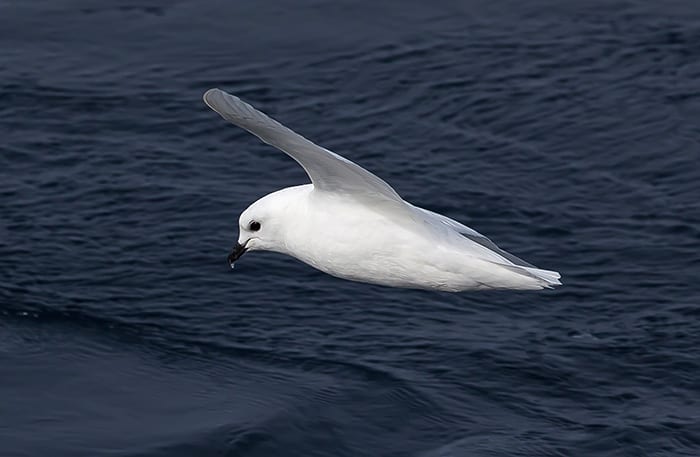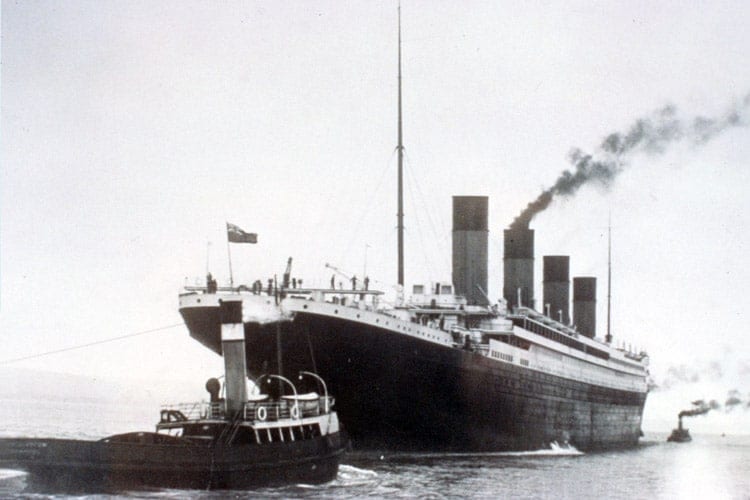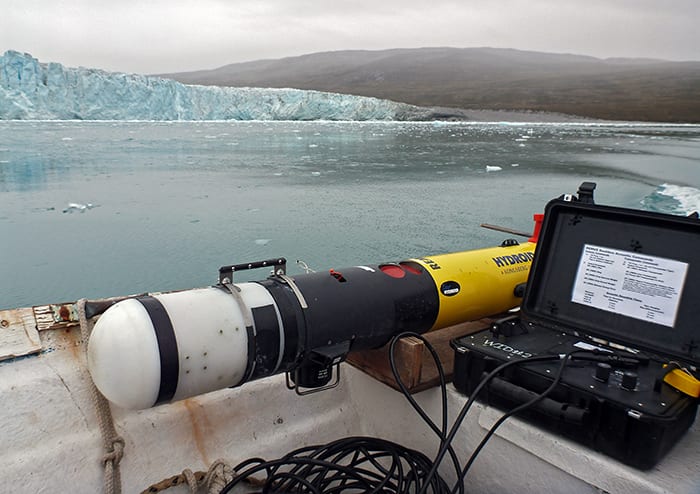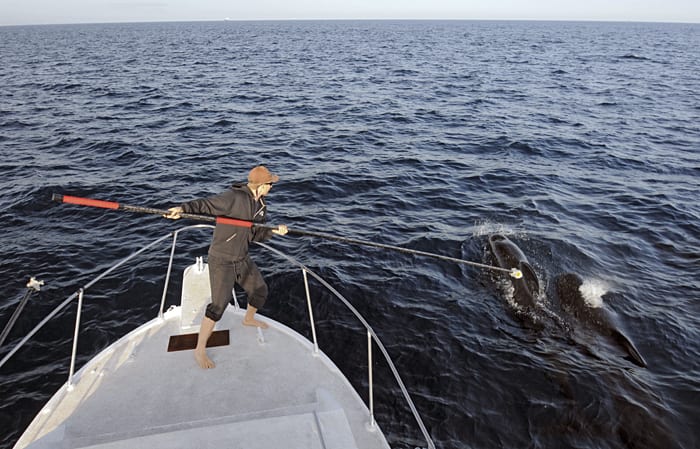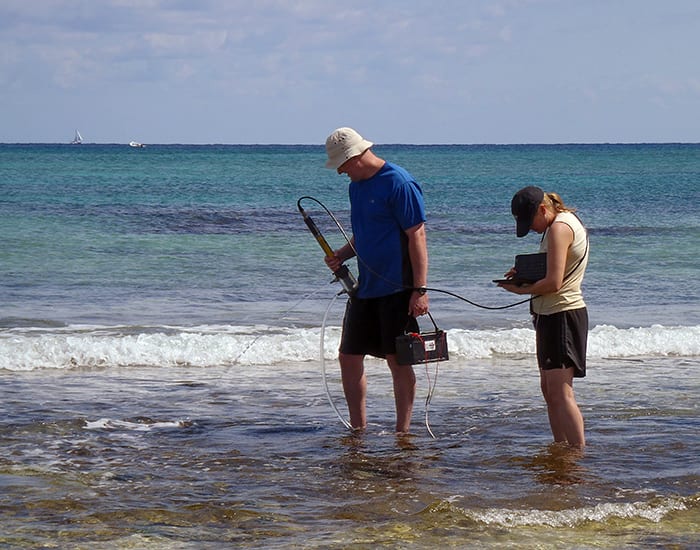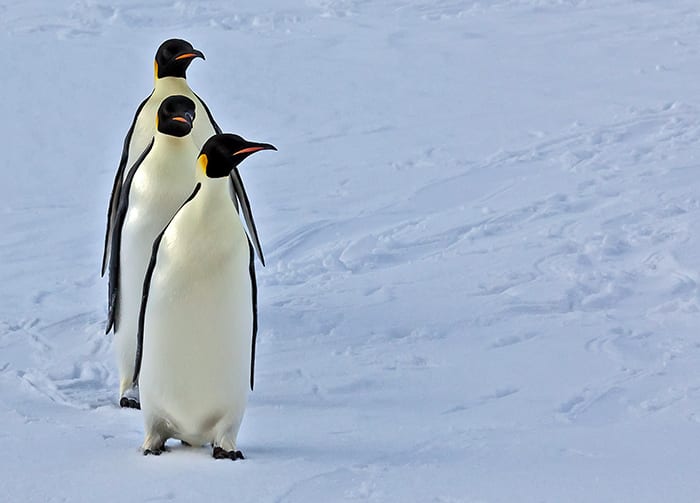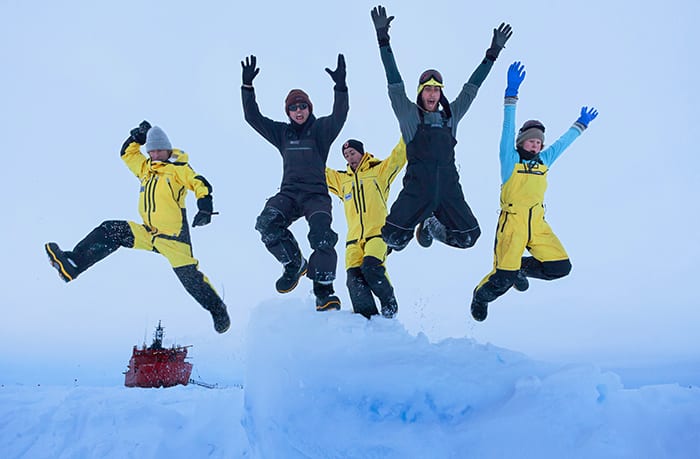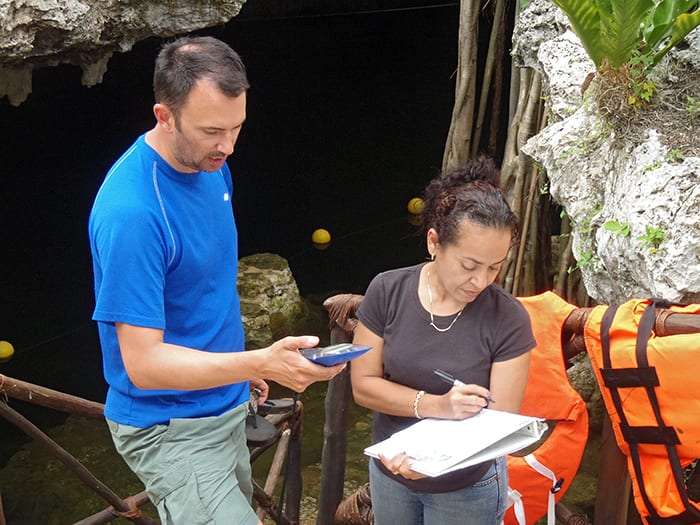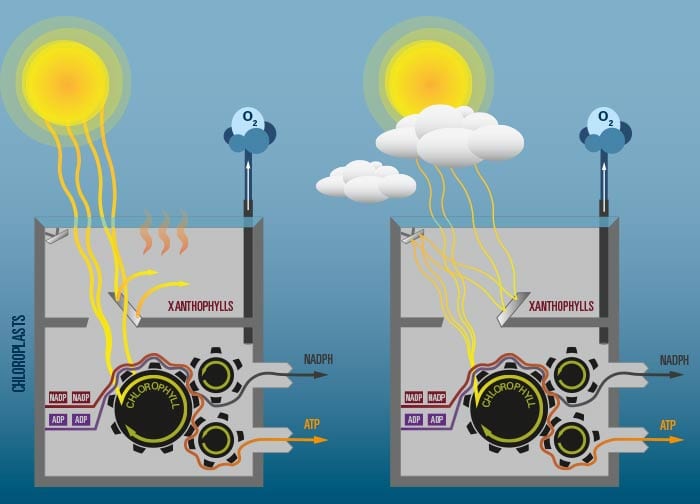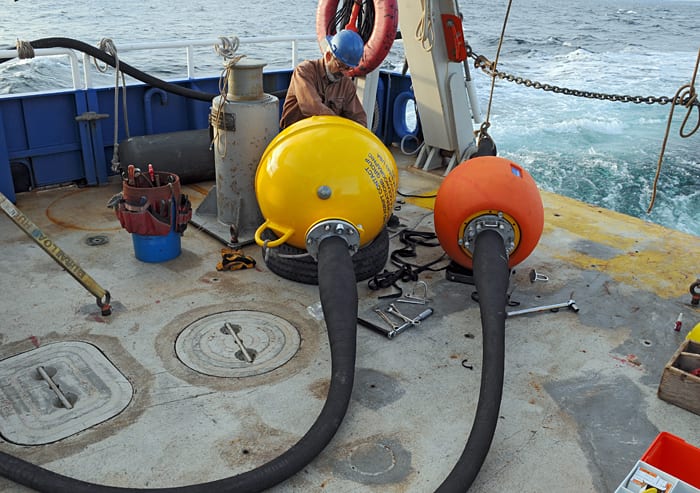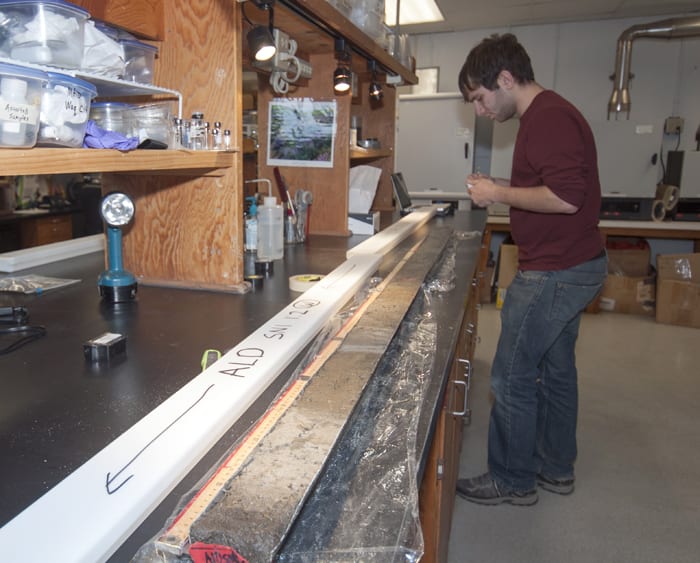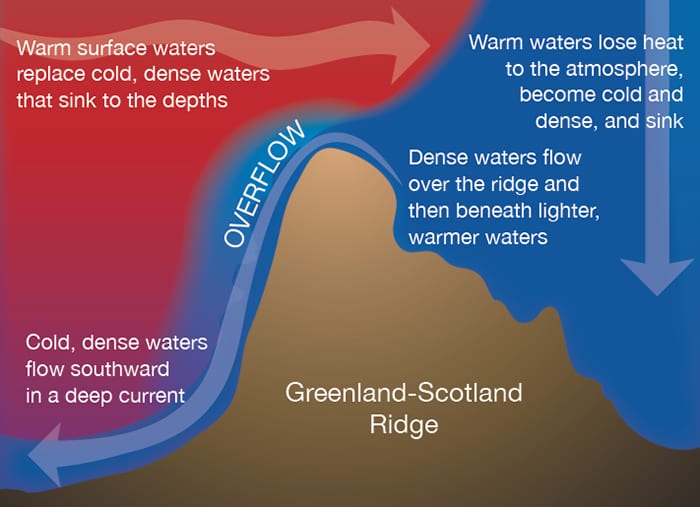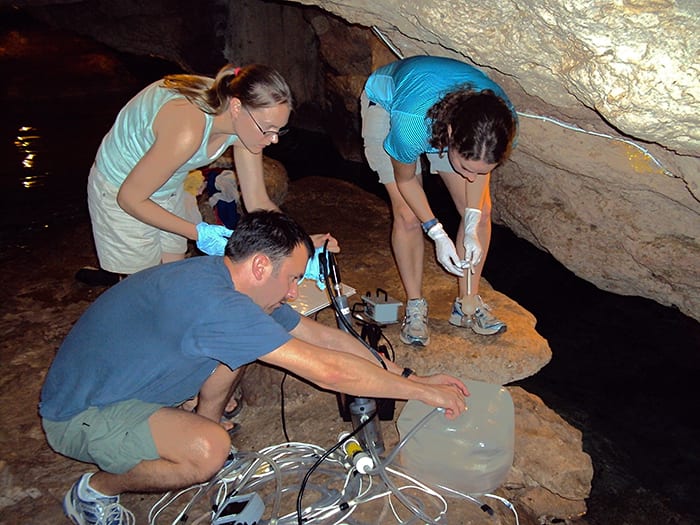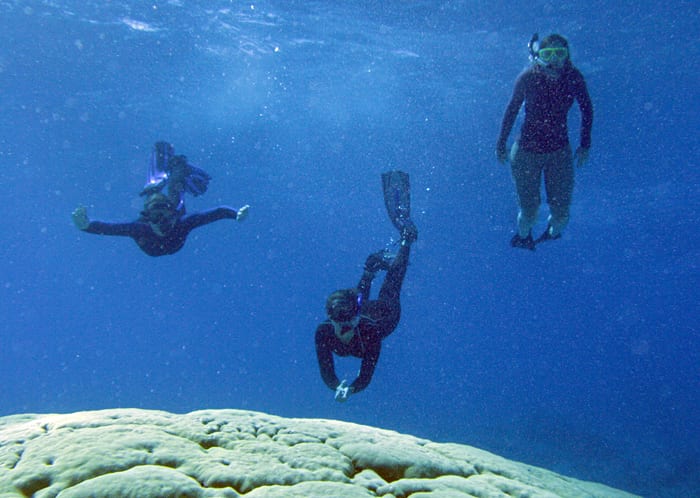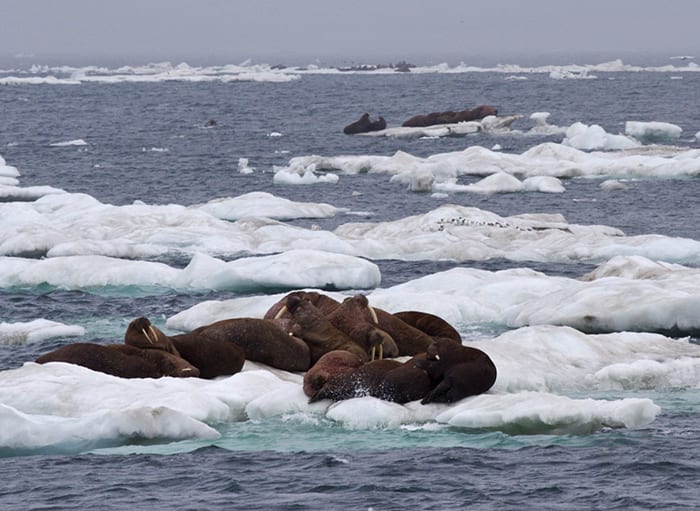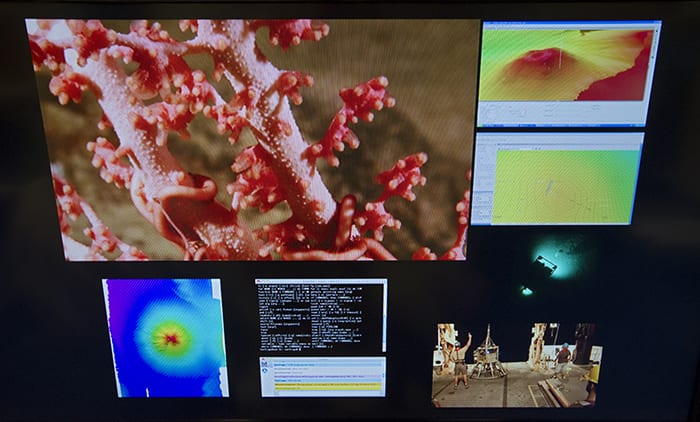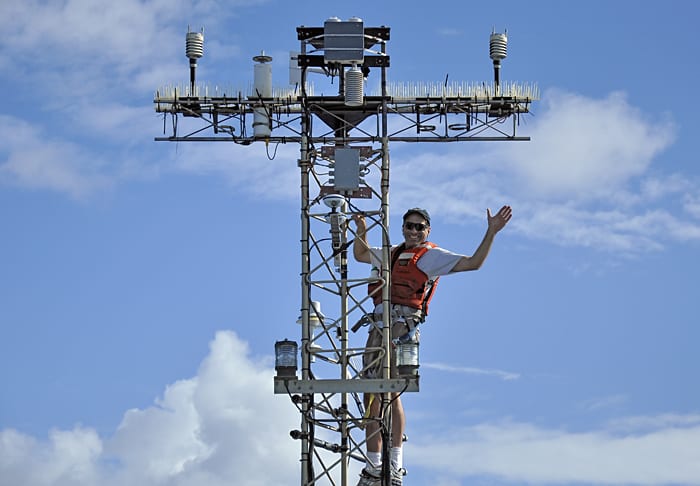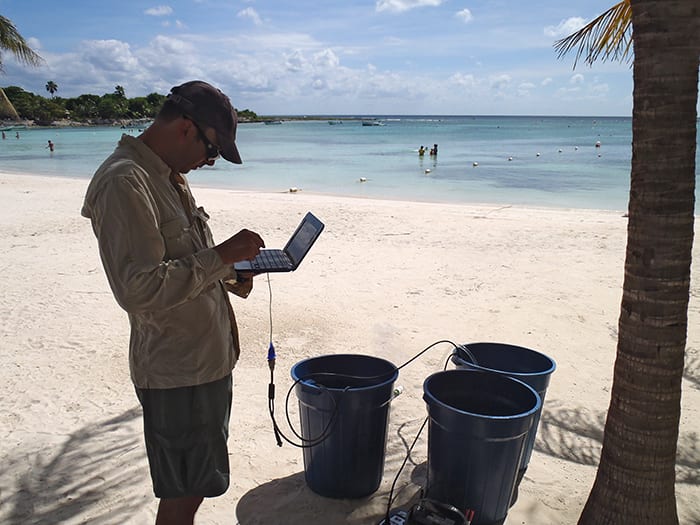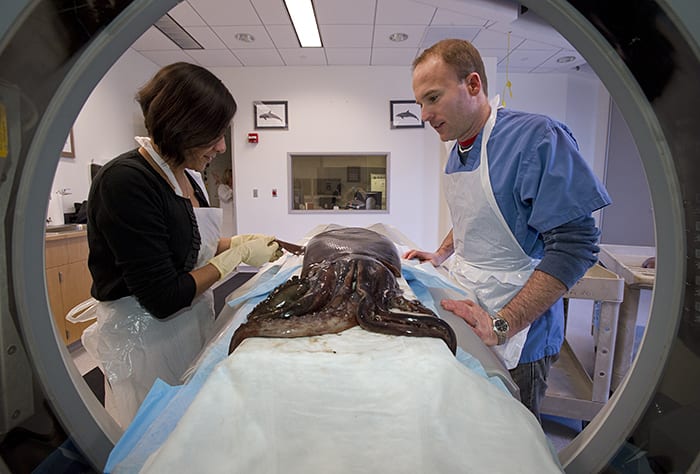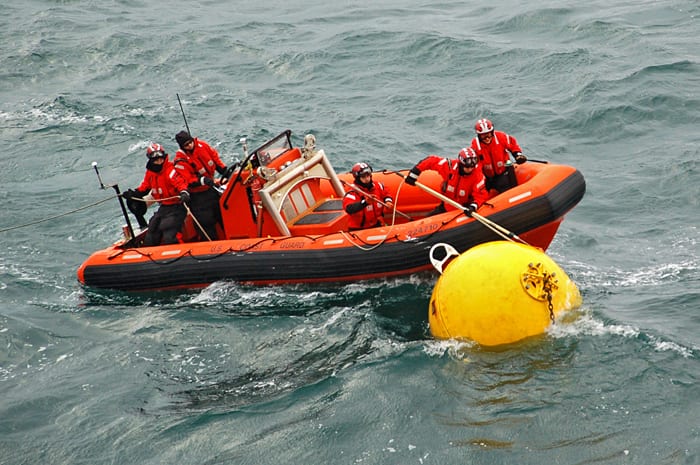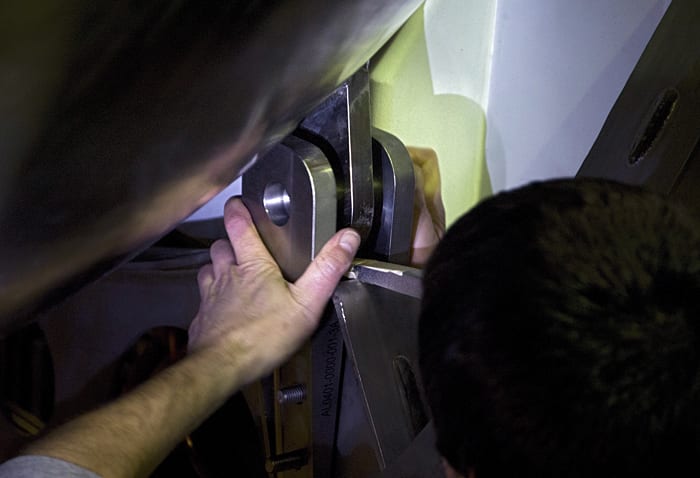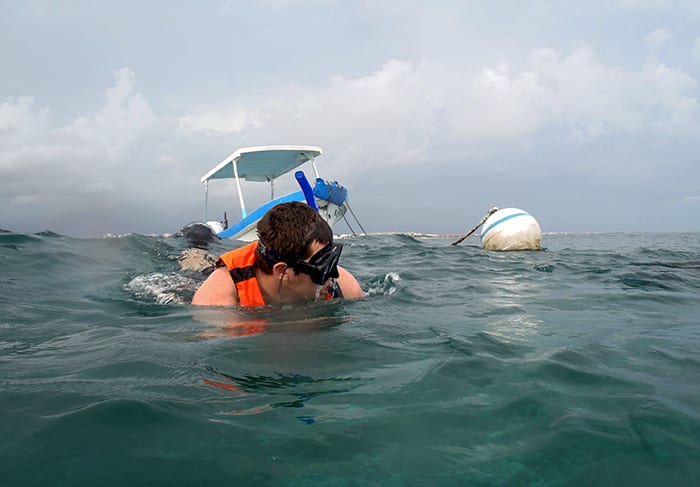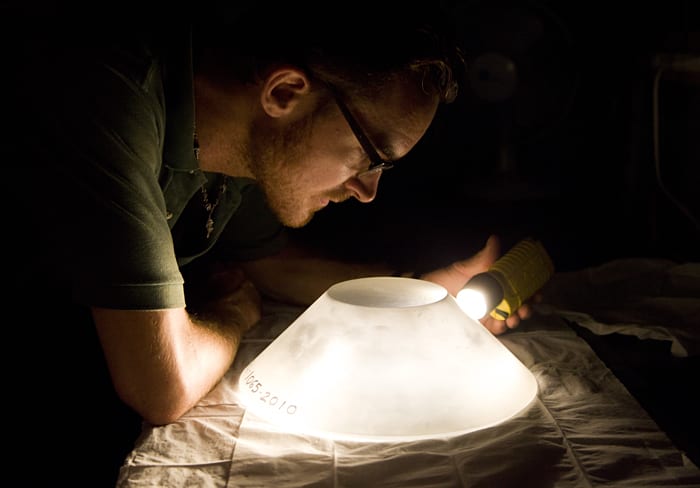Multimedia Items
Fellow Ice Explorer
A snow petrel, photographed during the Sea Ice Physics and Ecosystem Experiment (SIPEX-II) in fall 2012, floats over the ocean off Antarctica. These seabirds depend on sea ice, which serves as a grazing ground for…
Read MoreHistorical photos of the RMS Titanic
Something Fishy
A REMUS 100 “ICEBOT” autonomous underwater vehicle (AUV) is prepared for a July 2012 mission to map the hazard-filled edge of a glacier in Southwest Greenland. Once the team, led by…
Read MoreReady, Aim, Tag
Nicholas Macfarlane uses a carbon-fiber pole to put a DTAG (digital acoustic recording tag) on a long-finned pilot whale in the Straight of Gibraltar off Morocco. DTAGs, which were invented…
Read MoreWatch Your Step
WHOI researcher Paul Henderson and MIT/WHOI Joint Program student Meagan Gonneea pump water from holes that extend a meter or more into a rock outcrop beneath the subtidal zone along…
Read MoreKings of the Cold
At nearly four feet tall, the Emperor penguin is Antarctica’s largest sea bird—and thanks to films like “March of the Penguins” and “Happy Feet,” it’s also one of the continent’s…
Read MoreJump!
A successful day of autonomous underwater vehicle (AUV) operations in the Southern Ocean off Antarctica was reason to celebrate during the fall 2012 Sea Ice Physics and Ecosystem Experiment. From left…
Read MoreX Marks the Spot
WHOI scientist Matt Charette and Carolina Ruiz Fernandez of the National Autonomous University of Mexico use a GPS device to determine the precise location of a cenote, or natural sinkhole,…
Read MoreLet the Sun Shine In
WHOI biologist Sam Laney studies the daily lives of single-celled plants in the ocean known as phytoplankton. The organisms carry out photosynthesis within specialized organelles called chloroplasts, which contain the…
Read MoreStre-e-e-etch
Oceanographic moorings sometimes include a surface buoy connected by chain or cable to instruments below. In rough weather, rapidly changing tension on the chain causes noise that can interfere with…
Read MoreSandy of the Past
Zach Stromer, an undergraduate intern from Northeastern University working in Jeff Donnelly’s Coastal Systems Group, worked on a sediment core recently that Donnelly and his team collected immediately after Hurricane…
Read MoreAn Undersea Waterfall
Greenland-Scotland Ridge looms like a great undersea dam, stretching from East Greenland to Iceland and the Faroe Islands and across to Scotland. Warm, salty Gulf Stream waters flow over it…
Read MoreSubterranean Sampling
Matt Charette, Meagan Gonneea, and Crystal Breier collect and test samples of groundwater in a cave on the Yucatan Peninsula, Mexico. The instrument behind Charette’s arm measures the salinity, pH,…
Read MoreA Sea Far, Far Away
MIT-WHOI Joint Program graduate students Alice Alpert (left) and Liz Drenkard (center), and U.S. Fish and Wildlife Service representative Kelsie Ernsberger (right), snorkel above a large coral at an atoll…
Read MoreKnock, Knock
Underwater hydrophones in the busy Bering Sea record a cacophony of sounds, including “knocks” from walruses. Carter Esch, a MIT/WHOI Joint Program student in the Biology Department, utilizes these tools…
Read MoreLive From Indonesia
A computer monitor in the lab of deep-sea biologist Tim Shank displays images and live video from the INDEX 2010 expedition. The mission to explore the depths and diversity of…
Read MoreHigh Wire Act
Steve Faluotico of WHOI’s Applied Ocean Physics and Engineering Department cleans a sensor on the meteorological mast on R/V Knorr during the September 2012 SPURS cruise to study how salt content fluctuates…
Read MoreTracking the Flow
WHOI scientist Matt Charette and his students travel around the world studying groundwater flow to the ocean from various types of aquifers. Here, he checks the salinity of groundwater samples…
Read MoreKeeping Alvin Afloat
Syntactic foam, show here being mounted on the new Alvin human-occupied vehicle, helps make marine submersibles buoyant, even at great depth. The foam is made up of small balloons of…
Read MoreSquid Scan
WHOI biologist Aran Mooney and Dr. Iliana Ruiz-Cooley, a postdoctoral scientist at the NOAA-National Marine Fisheries Service Southwest regional office, examined a Humboldt squid before scanning its sensory structures at…
Read MoreA Day at the Office
In October 2012, crew members from the U.S. Coast Guard ice breaker Healy deployed a small boat to recover a mooring from the Beaufort Sea. The mooring was deployed by…
Read MoreTab A into Slot B
WHOI mechanic Brian Durante assembles a “clevis attachment,” one of four on the new titanium frame of the human occupied vehicle Alvin that connect the bottom lugs of the personnel…
Read MoreCoral Reconnaissance
Paul Henderson, a researcher in WHOI’s Coastal Groundwater Geochemistry Lab, snorkels near the Yucatan Peninsula to look for large corals for a study of groundwater flow. Because the Yucatan is…
Read MoreThe Better to See With
WHOI technician Jefferson Grau inspects a new Alvin viewport (window) to make sure it doesn’t contain bubbles or inclusions such as bits of dirt, which could cause the viewport to…
Read More
